
This SAP Analytics Cloud (SAC) training course is designed to help professionals master cloud-based analytics, combining BI, planning, and predictive capabilities in a unified platform. Learners will explore data connectivity, modeling, story creation, smart insights, and enterprise planning workflows. Through practical sessions, participants gain hands-on experience in building dashboards, configuring data actions, and using smart features for forecasting. Ideal for business analysts, planners, and consultants, this course empowers users to make strategic, data-driven decisions with SAC.
SAP Analytics Cloud Training Interview Questions Answers - For Intermediate
1. How do data actions function in SAP Analytics Cloud, and where are they typically used?
Data actions in SAP Analytics Cloud (SAC) are predefined sequences of planning steps used to manipulate and transform planning data. They are primarily used in planning models to automate repetitive tasks such as copying, allocating, or reclassifying data between versions, time periods, or dimensions. Data actions can include advanced formulas, filters, prompts, and scripting logic. These actions are typically triggered by users through stories or analytic applications and are crucial for executing top-down or bottom-up planning strategies efficiently.
2. What is the Calendar feature in SAC, and how does it assist in planning activities?
The Calendar in SAP Analytics Cloud enables the coordination and tracking of planning and analytical processes by assigning tasks, due dates, and responsibilities. It supports workflows, review cycles, task dependencies, and automated reminders. This feature is essential in collaborative planning environments, helping stakeholders stay aligned and ensuring timely completion of budget submissions, forecasts, or strategic reviews.
3. What are public and private dimensions in SAC, and how are they different?
Public dimensions are reusable across multiple models and can be centrally managed, ensuring consistency in dimension members like region, product, or cost center. Private dimensions, on the other hand, are model-specific and cannot be reused in other models. While public dimensions promote standardization and scalability, private dimensions offer flexibility for ad-hoc or isolated modeling requirements.
4. How does SAC handle currency conversion in planning models?
SAP Analytics Cloud supports multi-currency planning through built-in currency conversion tables within planning models. Users can define conversion rates based on currency pairs and time periods, and apply them using measures configured for local and group currencies. This enables consistent financial planning and consolidation across regions with different operating currencies, ensuring that values are accurately reflected for corporate reporting.
5. What is a Story Filter vs. a Page Filter in SAC?
Story Filters apply globally across all pages and widgets in a SAC story, while Page Filters apply only to specific pages. This distinction allows for flexible filtering capabilities within a story. For example, users can apply a story filter for the "Year" dimension to view the same time period across all content, while page filters can display different regions or departments per page, enabling segmented analysis.
6. What are data access controls (DAC) and how are they implemented?
Data Access Controls in SAC restrict data visibility at the row level based on user roles or attributes. Implemented using dimension properties and security filters, DAC ensures that users can only access data relevant to their responsibilities. For example, a regional manager may only see data for their assigned region. This granular control is vital for protecting sensitive data and ensuring compliance.
7. What are model variables and how are they used in stories?
Model variables are placeholders defined at the model level, typically used to filter data dynamically when building stories or applications. They prompt users to select values—such as time ranges or organizational units—before viewing the story. This helps tailor content to user-specific needs, improving performance and relevance without the need to create multiple versions of the same story.
8. What are restricted and calculated measures in SAC?
Restricted measures allow users to filter existing measures by specific dimensions or values (e.g., Revenue for Q1 only), while calculated measures are created by applying mathematical expressions to other measures (e.g., Profit = Revenue - Cost). Both types enhance the analytical power of SAC, enabling tailored KPIs and deeper data insights directly within the story or model.
9. What is Smart Discovery, and how does it support decision-making?
Smart Discovery in SAC uses machine learning to explore datasets, identify key influencers, detect patterns, and generate visual insights automatically. It creates a comprehensive output including correlation analysis, distribution charts, and predictive scenarios. This feature aids business users by simplifying complex data exploration and suggesting actionable findings without the need for statistical expertise.
10. What are planning functions in SAC, and how are they different from data actions?
Planning functions are predefined tasks such as allocations, spreads, and disaggregations that can be executed interactively in SAC planning stories. Unlike data actions, which are customizable and reusable automation scripts, planning functions are simpler and more user-driven. They are primarily used for top-down distribution or adjusting values across dimensions during planning.
11. How can SAP Analytics Cloud be embedded into external applications?
SAP Analytics Cloud supports embedding capabilities via its SDK and APIs, allowing dashboards, reports, and applications to be integrated into external portals, websites, or enterprise apps. Embedding SAC improves user experience by centralizing insights without switching platforms, and it enables single sign-on (SSO) and context-sensitive analytics within custom environments.
12. What is the difference between Input Tasks and Data Locking in SAC?
Input Tasks are planning-specific workflow tasks where data input is assigned to users with a deadline and comments. Data Locking, on the other hand, controls which data cells are editable based on region, version, or time, to prevent unauthorized changes. Input Tasks support collaborative data collection, while data locking ensures data integrity and version control during planning cycles.
13. What are predictive scenarios in SAC and what types are supported?
Predictive scenarios in SAC are built using the Smart Predict feature and support three main types: classification, regression, and time series forecasting. Classification is used to predict categorical outcomes (e.g., customer churn), regression predicts numerical values (e.g., sales volume), and time series is used for trend-based forecasting (e.g., revenue forecasts). These models help enhance decision-making with future-looking insights.
14. How does SAC integrate with Microsoft Excel?
SAP Analytics Cloud provides a Microsoft Excel add-in that allows users to access SAC models and plans directly within Excel. Users can use familiar Excel functionalities while connected to SAC data in real-time. This feature supports live data interaction, planning input, and version comparison, enabling finance and business users to work in their preferred environment while maintaining centralized data governance.
15. How can users manage versions in a collaborative planning environment?
In SAC, users can create private versions for personal simulations and then publish them as public versions for broader collaboration. Planners can lock versions for editing, set up review cycles using the calendar, and compare multiple versions using variance analysis. This supports iterative planning, scenario comparison, and approval workflows while maintaining auditability and transparency in the planning process.
SAP Analytics Cloud Training Interview Questions Answers - For Advanced
1. How do you architect a hybrid SAC environment with both SAP and non-SAP data sources?
Designing a hybrid SAC environment requires an architecture that supports both real-time (live) and batch (acquired) data integration. Live connections are established via the SAP Cloud Connector or direct tunnel using InA protocol to systems like SAP S/4HANA, BW/4HANA, or HANA Cloud, enabling on-the-fly query execution without replicating data. For non-SAP sources like SQL Server, Google BigQuery, Snowflake, or Salesforce, SAC uses acquired data models that pull data periodically into the cloud for transformation and reporting. The key to a successful hybrid setup is ensuring semantic alignment across sources using shared dimensions, harmonizing currency and time, and applying unified security models. Performance optimization, governance policies, and consistent metadata management are essential to support agile analytics, self-service, and cross-source storytelling within the same platform.
2. Explain the difference between Model-level and Story-level calculations in SAC and when to use each.
Model-level calculations are created within the data model and become part of the metadata layer, making them reusable across multiple stories and applications. These calculations are more efficient, especially with large datasets, and support complex aggregation logic such as restricted measures, calculated measures, and currency conversion. On the other hand, story-level calculations are created on-the-fly within a specific story or visualization. They’re ideal for ad hoc analysis or when users need to create temporary KPIs without altering the core model. While model-level calculations ensure consistency across the enterprise, story-level ones provide flexibility for rapid prototyping and exploration.
3. How can you implement custom user-based access control without duplicating models in SAC?
To avoid duplicating models, SAC allows custom user-based access through Data Access Control (DAC) and user attributes. DAC is defined on specific dimensions (e.g., Region or Business Unit), and users or teams are assigned access to specific members. By linking users to dimension values through attribute mappings or team structures, you can create dynamic security filters that control what data each user sees. This approach provides row-level security without maintaining multiple versions of the same model. It ensures performance, maintainability, and governance across large organizations with diverse access requirements.
4. Describe how data blending works in SAC and mention its limitations.
Data blending in SAC enables users to combine datasets from different models at the story level using linked dimensions. For example, one model may contain sales actuals, while another contains forecast data. By linking common dimensions such as “Product” or “Region,” SAC can create blended charts or tables showing variance analysis across both datasets. However, data blending has limitations: it only works for acquired data, requires consistent granularity, and does not support full calculated measures across models. Additionally, performance can degrade if datasets are large or if the join keys are not cleanly aligned.
5. How would you handle version comparisons and variance reporting in a planning scenario?
Version comparisons in SAC are done using built-in functionalities within the planning model that supports multiple versions like “Actual,” “Budget,” “Forecast,” and user-defined scenarios. Variance reporting is achieved by creating calculated measures (e.g., Forecast - Actual) and applying conditional formatting to highlight over/under-performance. Visualizations such as waterfall charts or variance bars can provide intuitive comparisons. Users can use data actions to copy data from one version to another for simulations, and private versions allow individual experimentation. Commentary can be added directly at the cell or widget level to capture explanations and context for variances.
6. What is the purpose of the Allocation Step in a data action, and how does it differ from the Allocation Process in classic planning tools?
The Allocation Step in SAC’s data action framework allows developers to define rules to distribute values across members based on drivers or fixed percentages. It supports filters, weights, references, and intermediate steps. Unlike traditional tools where allocations are tightly bound to specific data flows or are pre-configured in the backend, SAC’s allocation logic is dynamic, customizable, and can be executed by planners themselves. This empowers business users to initiate context-specific allocations on demand, enhancing agility and responsiveness in planning cycles.
7. How do you build audit dashboards to monitor user interaction and data changes in SAC?
SAC provides audit logs and system usage statistics that can be exported or connected to BI tools for building dashboards. Using the SAC System Monitor and Audit Export service, administrators can track user logins, data actions, story usage, and model modifications. These logs can be acquired into SAC itself to build custom dashboards visualizing user adoption, planning activity, and compliance metrics. Additionally, data audit features in planning models allow for cell-level change tracking (who changed what, when, and from what value to what), supporting regulatory compliance and internal governance.
8. What are some challenges in managing planning permissions in SAC, and how can they be addressed?
Planning permissions in SAC can become complex in large organizations due to overlapping roles, versions, and regional access requirements. Challenges include defining who can input data into which versions, locking periods to prevent editing, and restricting access to sensitive KPIs. These are addressed using a combination of roles, data locking configurations, and input tasks. SAC allows data locks at dimension and member levels and assigns reviewers to approve submitted data. Role-based access can be granularly defined to control who can view, edit, publish, or delete planning data. A governance framework must be in place to manage these settings centrally.
9. How can you use scripting to automate data submissions and validations in SAC planning applications?
Scripting in Application Designer enables automation of tasks like data submission, validation checks, and triggering follow-up actions. For example, on clicking a button, a script can validate that all required fields are filled, lock the input region, execute a data action, and then send an alert to the reviewer. Scripts can also dynamically change filter values or update charts based on logic. By automating repetitive and error-prone tasks, scripting enhances efficiency, reduces manual errors, and enforces business rules within the planning workflow.
10. How does SAC ensure consistency when the same data is used for both reporting and planning?
SAC achieves consistency through shared models and live connections. The same model structure used for planning (with versions like Actual and Budget) can be reused for reporting, ensuring one source of truth. When actuals are pulled directly from ERP systems like S/4HANA using live connections, and budgets or forecasts are entered into the same structure in SAC, variance analysis and dashboarding become seamless. By aligning master data, hierarchies, and currency conversions across planning and reporting models, SAC eliminates silos and avoids data duplication or reconciliation efforts.
11. What is the significance of the “Read” and “Write” modes in planning stories, and how are they managed?
In SAC planning stories, “Read” mode is used for reporting, where data is displayed but not editable. “Write” mode allows users to input values, either manually or via pasting or spreading data. These modes are governed by the user’s role and data locking settings. Administrators manage write access by configuring input-ready measures, enabling/disabling input controls, and applying cell-level locks. This is critical for ensuring that only authorized users can update sensitive planning data, while others can still consume and analyze the outputs in read-only mode.
12. How can SAC support driver-based rolling forecasts, and what are the key components involved?
Driver-based rolling forecasts in SAC involve modeling relationships between operational drivers and financial outcomes. Key components include planning models with defined versions and time dimensions, input controls for adjusting drivers (e.g., sales volume, hiring rate), and calculated measures for dependent KPIs (e.g., revenue = volume × price). Data actions automate the rolling of forecast periods and populating new forecast versions. Application Designer scripts can dynamically shift the time window and update charts accordingly. This enables continuous forecasting and scenario planning, aligning operations with changing market conditions.
13. How does SAC handle master data maintenance in large-scale planning scenarios?
Master data in SAC can be imported, manually created, or synchronized with backend systems like BW or S/4HANA. In large-scale scenarios, it is crucial to maintain hierarchy consistency, attribute values, and member descriptions. Public dimensions allow reuse across models, ensuring governance and consistency. Master data changes can be tracked using version history, and data access control can be applied at the member level. In planning workflows, new members can be introduced during simulations (e.g., new cost centers or products), but typically require administrator approval before becoming part of the official dimension.
14. What strategies can be used to optimize story performance when dealing with large datasets?
To optimize story performance, best practices include minimizing the number of widgets per page, avoiding unnecessary calculations at the story level, and limiting data points returned through filters or input controls. Use of pagination, invisible widgets, and chart loading in the background can reduce rendering time. For acquired models, aggregating data during import and minimizing blending are key. For live models, tuning backend queries and using data-level authorizations to reduce scope are critical. SAC also supports performance diagnostics through the Performance Analyzer tool, which helps identify bottlenecks and optimize design.
15. How do you migrate content (stories, models, data actions) between SAC tenants?
Migration between tenants (e.g., from development to production) is managed using the SAC Content Network or Transport Management. Content bundles can be created including stories, models, data actions, applications, and more. These are exported as packages and imported into the target tenant, preserving dependencies and versioning. SAC also supports change tracking and rollback through version control. Best practices include maintaining naming conventions, documenting transport steps, and performing validation tests in each environment to ensure integrity and consistency post-migration.
Course Schedule
| Dec, 2025 | Weekdays | Mon-Fri | Enquire Now |
| Weekend | Sat-Sun | Enquire Now | |
| Jan, 2026 | Weekdays | Mon-Fri | Enquire Now |
| Weekend | Sat-Sun | Enquire Now |
Related Courses
Related Articles
- Strengthen Access Control Systems with Smart PingDirectory Administration
- The Future of IT Asset Management: How ServiceNow ITAM is Leading the Way
- Why Companies Trust SailPoint IdentityIQ Implementation and Developer for Identity Management
- Comprehensive Guide to SAP Analytics Cloud
- Top 10 Questions with Answers for Blue Prism Interview
Related Interview
- DataBricks Lakehouse Training Interview Questions Answers
- AVEVA ERM Training Interview Questions Answers
- Primavera Unifier Admin Training Interview Questions Answers
- DP-600T00: Microsoft Fabric Analytics Engineer Training Interview Questions Answers
- OpenText Captiva Developer Training Interview Questions Answers
Related FAQ's
- Instructor-led Live Online Interactive Training
- Project Based Customized Learning
- Fast Track Training Program
- Self-paced learning
- In one-on-one training, you have the flexibility to choose the days, timings, and duration according to your preferences.
- We create a personalized training calendar based on your chosen schedule.
- Complete Live Online Interactive Training of the Course
- After Training Recorded Videos
- Session-wise Learning Material and notes for lifetime
- Practical & Assignments exercises
- Global Course Completion Certificate
- 24x7 after Training Support

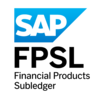



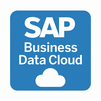
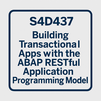
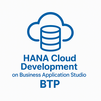
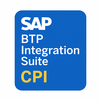


 Join our Live Instructor-Led online classes delivered by industry experts
Join our Live Instructor-Led online classes delivered by industry experts